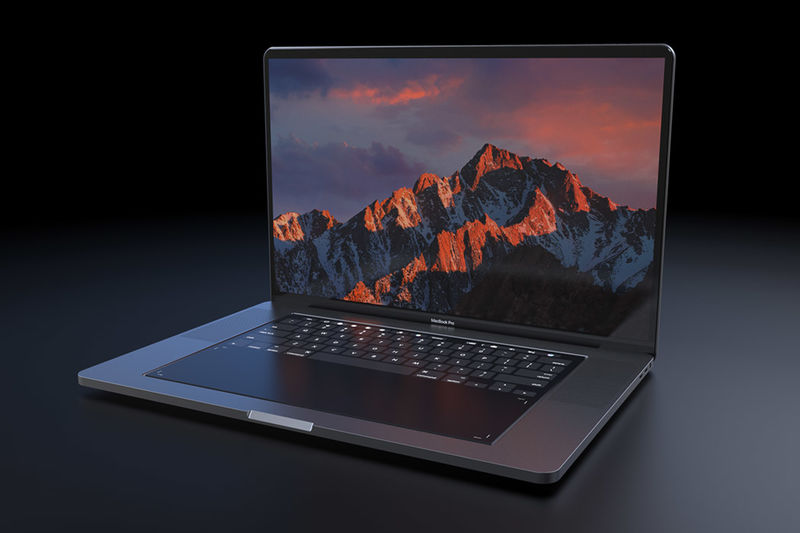
We've been training on such keyboards for a decade thanks to our mobile devices, and it would allow for even lighter/thinner notebooks that would likely require fewer repairs, so. The reality out here in the real world is that 99 percent of users are constantly switching between flat mobile-device on-screen keyboards and various kinds of traditional medium-travel USB or BT keyboards for most of their computers, and nobody but the nit-pickers or those who are actually in fact having mechanical keyboard issues care or notice.įrankly, I strongly suspect that the future is haptic-feedback flatscreen keyboards, because this presents several advantages in manufacture cost (no more making custom keyboards for different languages, keyboards can be customized on-the-fly for optimum application use, no more ingress from food/drink etc) and only one minor disadvantage (if the on-screen KB breaks, you'll need to switch to a BT keyboard till you get the screen replaced). Perhaps I'm just a freak, but I have no trouble switching between them, and am more-or-less equally adept and productive at all of them.
#2018 MAC PRO SPECS BLUETOOTH#
I also routinely use a Logitech K480 (a very plastic, higher-travel cheap Bluetooth keyboard) with my iPad Pro, and I like it very much too - and of course I occasionally use the on-screen, no-travel-at-all keyboard of my iPhone and iPad. Same old, same old - from the same old sources.
#2018 MAC PRO SPECS PC#
I remember when the "chiclet" keystyle of the MacBook Air and 2012 MBP (and now, every single PC laptop in the world) were new and just as controversial. I was always a "gentle" touch typist, so I've had zero trouble adapting to the low-travel keyboards across the MacBook and MBP lines I enjoy them and have had no trouble with them whatsoever, but then I don't eat or drink over them (not saying that's the cause of all MBP keyboard issues, but it doesn't help). I don't find the recent MBP keyboards (which I use a lot when working for a contractor) to be bad at all I enjoy the larger keypads, which I've noticed slightly improve my accuracy. I also use both keyboards, and I will agree with you that the Magic Keyboard is a better keyboard - but that's where we part company. It’s still amazing to me that Apple has managed to ship a keyboard is just completely miserable to type on. And I’m not talking about removing ports, unifying that into a single do-everything port was inevitable and practical. I’m not alone in thinking that Apple made poor choices and trade-offs for the current design of the MacBook Pro.
#2018 MAC PRO SPECS PORTABLE#
One needs only to alternate between using these two to know that one is what a keyboard should be and the other is a compromised imitation of it, hampered so by other design desires for size and weight on the portable product.Īs someone who regularly does switch between the two, using an iMac all day for work and then a MacBook Pro when away from the desk, it is a huge downgrade in experience when moving away from the iMac. Meanwhile, they also make one of the best keyboards to type on that I’ve ever used, the current gen Magic Keyboard.

It’s still amazing to me that Apple has managed to ship a keyboard on its flagship Mac for 3 years now that not only is inherently flawed and prone to defect, but is just completely miserable to type on. VGA, HDMI, and Thunderbolt 2 output supported using adapters (sold separately)įor better understanding screen actual sizes, viewport sizes, display resolution and about their density click here.Metriacanthosaurus said about 2 years ago Up to two displays with 3840 x 2160 resolution at 60Hz


Up to two displays with 4096 x 2304 resolution at 60H One display with 5120 x 2880 resolution at 60Hz MacBook Pro 2018 (13 inch) built-in-display to support highly NATIVE resolutions upto 5K with use of thunderbolt or HDMI display devices. MacBook Pro 2018 (13 inch) supports scaled lower resolutions listed below: MacBook Pro 2018 (13 inch) has viewport size 1280 x 800 Pixels and its pixel ratio is about 2. and sum of actual pixels of any device is reffered to as "Viewport".ġ3.3" physical screen size with IPS technology and it's native resolution is 2560 x 1600 Pixels with approximately 227 PPI pixel density. The sum of pixels which are displaying on a device is called as "Screen Resolution".


 0 kommentar(er)
0 kommentar(er)
